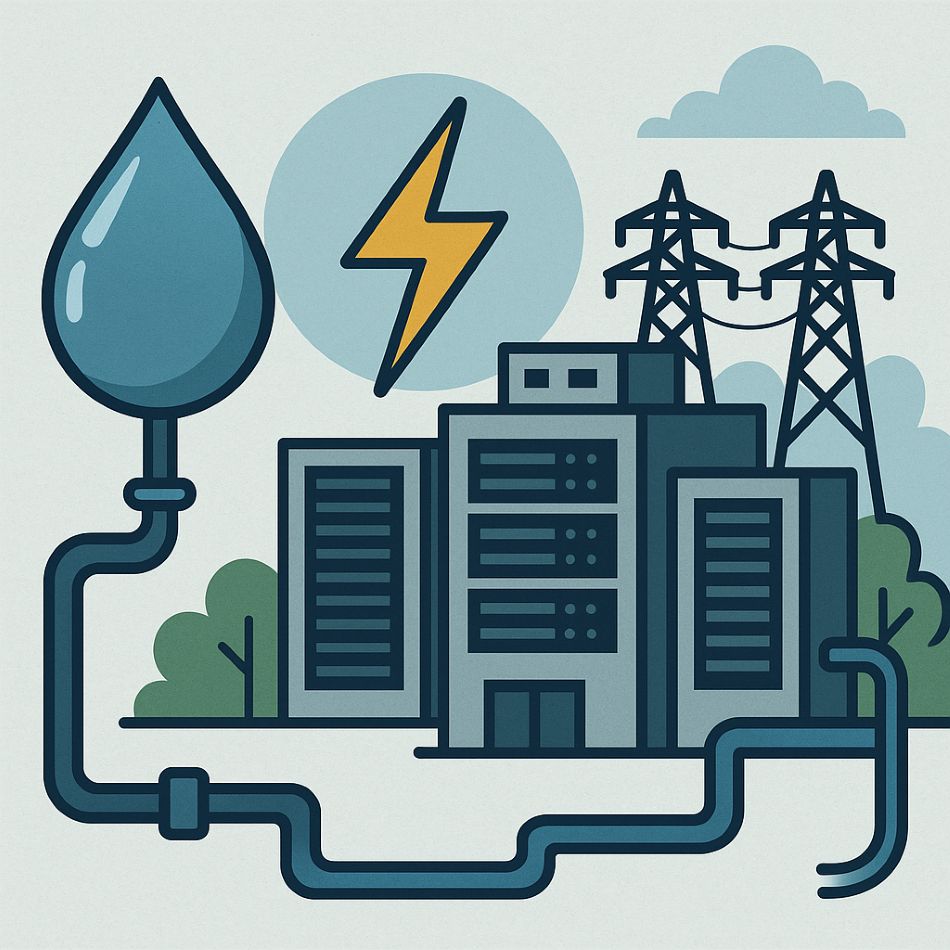
Data centers in Brazil consume only 1.7% of the country’s electricity and 0.003% of its water annually, according to a study based on 2024 and 2022 data, respectively.
The report was developed by ICT industry association Brasscom with support from the Brazilian data center association, ABDC, and technical review by FADURPE, the Apolônio Salles Foundation for Educational Development, a private institution linked to the Federal Rural University of Pernambuco.
The goal, the entities said, is to “support discussions about water and energy consumption in data centers in Brazil” with ‘solid positions and analyses using reliable data.”
The fact is data centers are under growing pressure.
As the significance of data storage and processing infrastructure expands – driven by advancements in cloud computing and artificial intelligence demands and attracting massive investments – data centers are encountering heightened public scrutiny regarding their consumption of critical resources such as water, land, and electricity.
“We seek to strengthen understanding of the current scenario and trends in the data center market and support the development of consistent policies and actions that foster the country’s sovereignty in the use of emerging technologies,” the report states.
Also Read: Gearing up: The electric power firms turning on the data center switch
Also Read: From São Paulo to Querétaro: How Latin America is driving the next wave of cloud infrastructure
Water use
The study estimates that only 20% of Brazil’s current data center fleet uses open-circuit water cooling, a less efficient system that consumes more water.
Brasscom and ABDC estimate consumption in such systems at 1,500 liters per megawatt-hour (MWh), with losses of around 30L/MWh, mostly due to evaporation.
While more water is consumed, these systems typically consume less energy and can help achieve lower power usage effectiveness (PUE) ratios.
Citing Geidco data, the report says the global average PUE for data centers in 2024 was 1.53. More recent projects in Latin America, such as those by Ascenty, are targeting values of 1.4–1.3.
RT-One, which is building two AI-focused campuses in Brazil, is aiming for even lower ratios, of 1.2–1.1.
Headquartered in Beijing and linked to the World Economic Forum, Geidco refers to the Global Energy Interconnection Development and Cooperation Organization.
Founded in 2016, its purpose is to advance a global energy interconnection (GEI) system aimed at supporting the development of sustainable, clean, and interconnected energy networks worldwide.
The other 80% of large Brazilian data centers use closed-loop water systems, in which water or oil circulates in a sealed environment to cool equipment, according to Brasscom and ABDC.
These systems require an initial water load but operate with minimal losses. The study estimates that closed-loop systems use around 23,000L per MW for this one-time fill.
Between 2022 and 2029, data centers are expected to account for 0.006% of Brazil’s total water use.
In comparison, irrigated agriculture is expected to account for 53.8%, human consumption 22.9%, and manufacturing 9.5%, followed by other sectors such as animal supply, thermoelectric plants and mining, the study states.
Power consumption
As per power itsef, data centers consumed 11.3TWh of electricity in 2024, or 1.7% of the country’s total, according to the report. This includes energy for IT equipment, cooling but lso for general operations.
Total electricity consumption in Brazil last year was 650.4TWh, representing 36% of the country’s total generation capacity, says the study citing official power data.
This implies a 64% untapped margin between generation and consumption.
Citing national power regulator Aneel, the study states that 0.6% of Brazil’s potential generation capacity was absorbed by data centers in 2024.
Installed capacity
Looking ahead, the report estimates that data center installed power in Brazil will exceed 1GW (1,063MW) by the end of this year, up from 843MW at end-2024.
By 2031, installed capacity is expected to reach 3,144MW.
Meanwhile in Chile, energy demand from data centers could reach 1,360MW by 2032, up from 325MW this year, according to estimates from national grid coordinator CEN.
According to the study, in 2029 data centers are projected to account for 3.6% of the country’s total energy consumption, with an estimated installed power of 2.19GW.
At the same time, the authors also note that the global data center industry’s PUE is anticipated to decrease by 7.3% between 2025 and 2030.
(The original version of this content was written in English)



